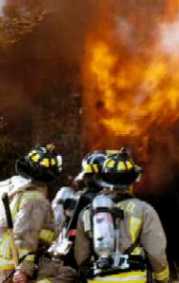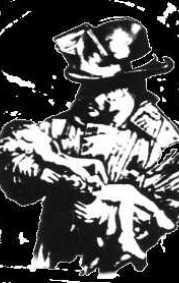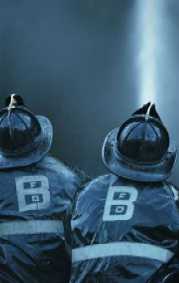|



|
|
|
The beginning of the country’s Fire Service entity dates back to 1901 with the pioneer firefighters of the Manila Fire Department which was headed by New Yorker Capt. F.R. Dodge as the Fire Chief.
Since then, the Manila Fire Department had gradually grown and became the launching point of fire service units in the neighboring towns and cities. Eventually, the fire protection system expanded to other parts of the country.
For a long time, firemen like the police and jail forces had been under the control of local government authorities until in the middle 70’s, they were integrated into the defunct PC/INP which was a national agency under the Department of National Defense (DND).
For several years under the PC/INP organization, the Fire Service had proven its efficiency in the field of public service..
The passage of Republic Act (RA) 6975 in 1990 changed the entire organization. Better known as the Department of the Interior and Local Government Act of 1990 (DILG Act of 1990), the PC/INP was dissolved and was divided into three (3) separate agencies , namely: the Philippine National Police (PNP), the Bureau of Jail Management and Penology (BJMP), and the Bureau of Fire Protection (BFP) all under the auspices of the Department of the Interior and Local Government (DILG).
The Bureau of Fire Protection, referred to as the Fire Bureau, was created under Rule VIII, Section 49 of Republic Act 6975.
In Section 50 of the same Act, the Fire Bureau is responsible for the prevention and suppression of all destructive fires on buildings, houses, and other structures, forests, land transportation vehicles and equipment, ships or vessels docked at piers or wharves or anchored in major seaports, petroleum industry installations, plane crashes and other similar incidents, as well as the enforcement of the Fire Code..
The then existing powers and functions delegated to the Station Commanders, Provincial Superintendents, Regional Directors, Director General INP, and the Secretary of National Defense under the PC/INP set-up are now exercised by the City/Municipal Fire Marshals, Provincial Fire Marshals, Director of the Fire Bureau and the Secretary of the DILG, respectively.
The Fire Bureau is also empowered to investigate all causes of fires and, if necessary, file the proper complaints with the city or provincial prosecutor who has jurisdiction over the case.
The BFP is a community-oriented government agency that provides assistance to the citizenry not only during fire but also in times of typhoons, floods, earthquakes, vehicular accidents, and various other calamities.
While its primary mission is to serve the fire safety needs of the country, the Fire Bureau is also active in rescue, evacuation, paramedic and relief operation in any life-threatening situation.With Senior Inspector Artemio Tabaranza as the City Fire Marshal, the Tacloban Central Fire Station is complemented by 100 firefighters, 14 firetrucks and 1 paramedic ambulance.
The city fire station faces the gargantuan task of protecting the lives and property of almost 200,000 city residents from the hazards of destructive fires.
The fire station is backed-up by support units that includes the Tacloban Filipino-Chinese Chamber of Commerce Volunteer Fire Brigade, the Filipino-Chinese Volunteer Fire Brigade, the Bureau of Air Transportation Fire Companies, the Barangay Volunteer Fire Brigades, and Non-Government Organizations.
OUR MISSION: The BUREAU OF FIRE PROTECTION (BFP) shall ensure public safety through the prevention of and suppression of all kinds of destructive fires with the active support of the community, enforce the Fire Code and has the power to investigate all causes of fire and if necessary, file the proper complaints with the appropriate agency.
OUR VISION: The BUREAU OF FIRE PROTECTION ENVISIONS a modernized efficient and responsive national fire protection agency fully-equipped and manned by highly-trained officers and men with capability, initiative and foresight in fulfillment of duty, as well as resilience and strength to confront the onslaught of raging fire and other disasters and calamities.
|
|
Back To Top
|


